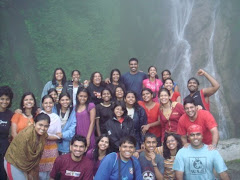In the days of yore, the fertile Valley of Nubra formed a part of the overland route between Tibet and Turkestan. Once dotted with garlands of camel and yak caravans, this Silk Route glen is also known as the Valley of Flowers of Ladakh, and is amongst the greenest valleys in the region. The romance of the Silk Route still hangs in the air as you cross the formidable Khardung La (pass) the highest motorable pass on the planet that connects Leh to the Nubra Valley. The road from Leh rises steeply to meet Khardung La and then dramatically plunges into a whirlpool of bends and turns to gradually unfold itself along the rushing Shyok and the Nubra Rivers.
The Nubra Valley was a coveted treasure for Turkestan and was repeatedly invaded by it. One can understand why anyone would envy this flowering glen. During early summer, Nubra is clad in endless bushes of yellow and pink wild roses, and once the valley is through with the season of roses around August, a carpet of wild lavender lies gently on it. Nubra is also a relatively warmer valley in Ladakh, and the comparatively benign climate helps yield better crops and fruits, making Nubra the Ldumra or orchard of Ladakh.
The Diskit Village is located slightly off the little hamlet of Khalsar. Dotted with apricot plantations, Diskit is amongst the larger villages in the region, and home to the 350 year-old Diskit Gompa the oldest, and the largest monastery in the Nubra Valley. Diskit has a number of rudimentary hotels and guest houses, with an odd store here and there. Do carry ample supplies with you when you leave Leh, as Nubra has little to offer besides the very basic. The road between Diskit and the quaint little Hunder Village winds through a gorgeous stretch of sand dunes. You could spend a pleasant evening around these natural marvels that border a stream, and have snowcapped peaks for a backdrop. Keep your eyes open for the double-humped camels! Hunder also has some accommodation for travellers. Also ask around about families that rent out rooms, as these are by far the best places to stay. The Hunder Gompa has some old frescos and a statue of Buddha. The monastery is also the best place in the village for a view of the dipping sun.
The Samtanling Gompa at the relatively bigger Sumur Village is definitely worth a visit, and houses a fine collection of idols, frescos and tangkhas (painted and embroidered scrolls). Sumur too offers basic accommodation, and a few days spent in this busy little village can be a very pleasant experience. There is a lovely campsite by the river, close to the village. The campsite, like some others in Nubra, offers good tents-for-two with beds and a table and common dining and wash rooms. Though a little steep on the pocket, the continental breakfast and the range of good food at the camp can be very tempting in Nubra, where a can of beans carried all the way from Leh is a delicacy. Try living in the campsite for a day or two if you can afford it. Nights at the campsite are especially fascinating the sky is studded with stars that seem oversized due to the altitude, and the countless shooting stars seem to fall slower than usual, leaving behind a long shimmering trail. Add to this the sound of the gurgling river as you drift slowly into a restful sleep.
The waters of the hot sulphur springs at the village of Panamik, the last destination travellers are permitted to travel to in Nubra, are believed to have certain medicinal qualities that cure a number of ailments. If you are in the mood for yet another monastery, you can walk to the Ensa Gompa that is over 250 years old.

No comments:
Post a Comment